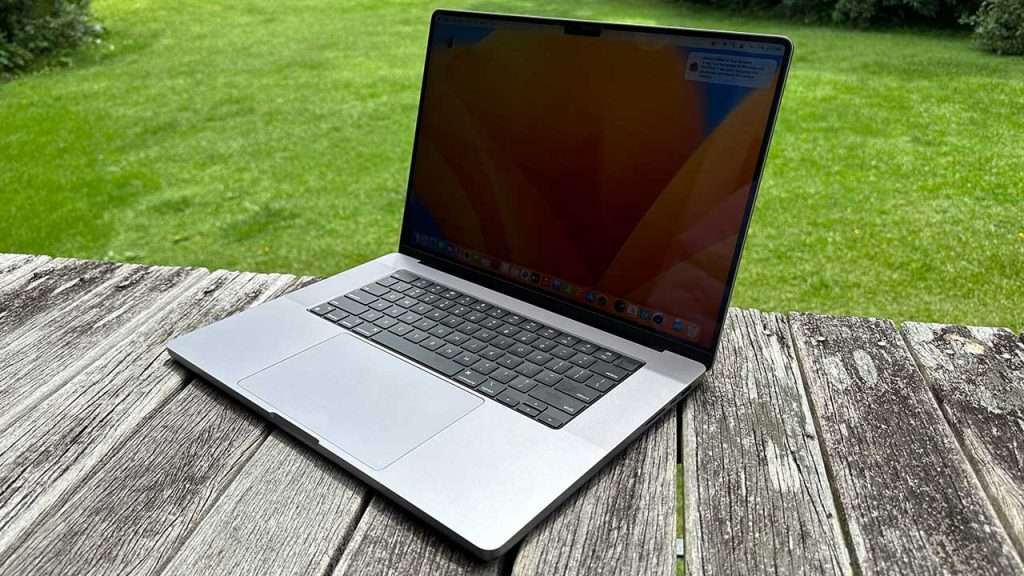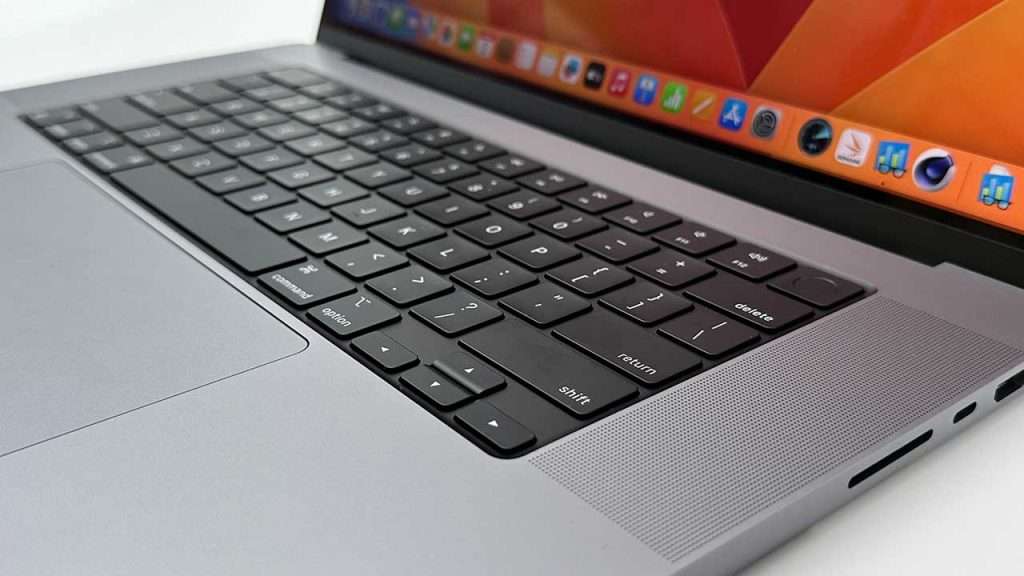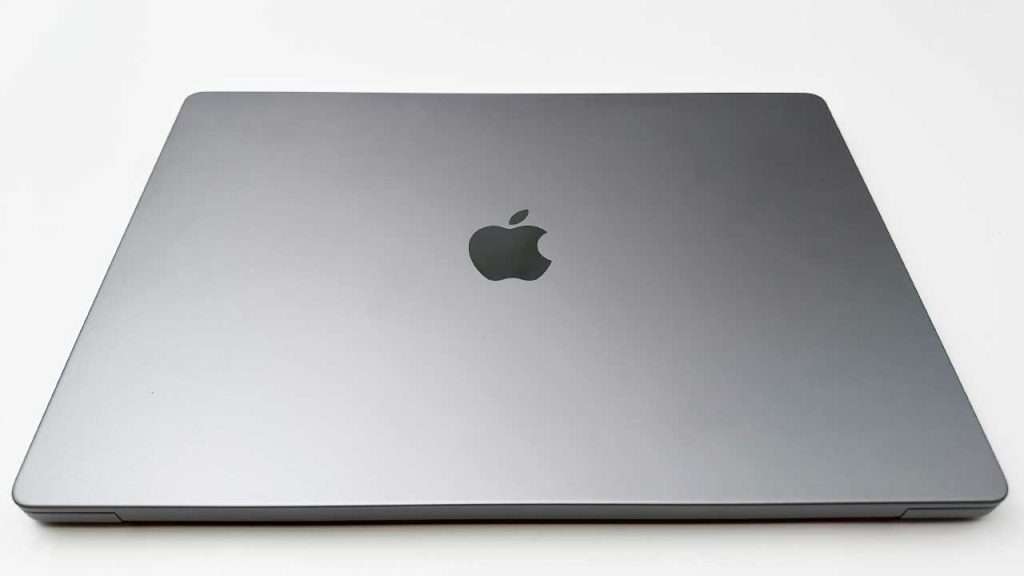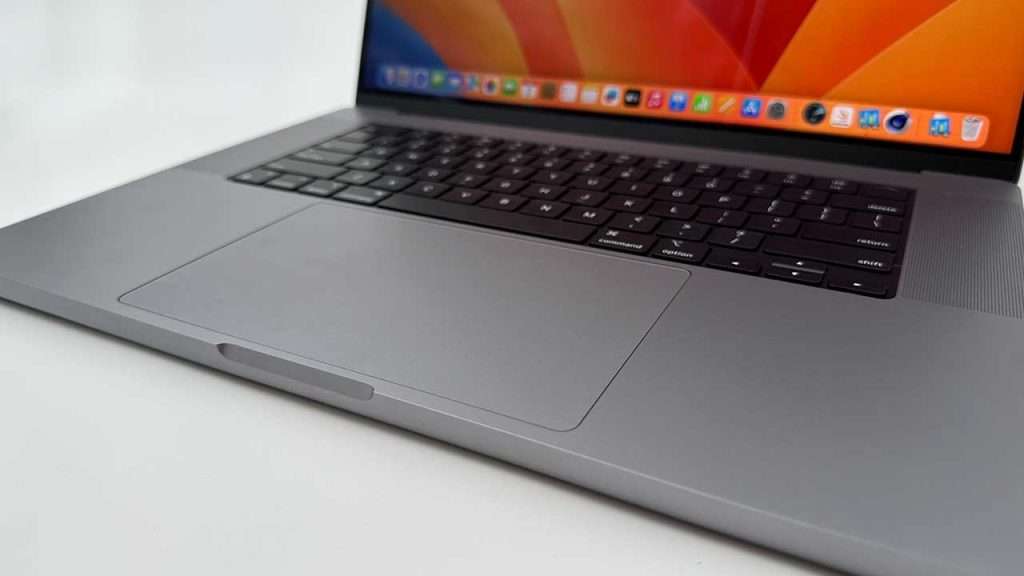The MacBook Pro 16-inch (M2 Max, 2023) proves that Apple’s custom M1 chips weren’t just a one-trick pony. With more CPU and GPU cores, and an insane amount of RAM, the M2 Max packs even more power into a practically-perfect laptop.
The sheer power of the M1 Max gives video editors, graphic designers, and content creators of all kinds the performance to blast through projects without a hitch, and the M2 Max amazingly raises the bar even higher. But it also pushes the 2023 MacBook Pro lineup into a more niche category.
We’re big fans of the MacBook Pro 14-inch (2021), but even that is more than enough power for pro users. To this day, it still packs a punch, making the MacBook Pro with M2 Max seem like overkill. That said, the performance gains aren’t that significant, and you’re getting the same dazzling display, attractive design, and long-lasting battery life as on the previous model.
If you’re a power user needing the top-notch performance the M2 Max chip delivers, and the 2023 MacBook Pro 16-inch won’t disappoint. But those who already own an M1-powered MacBook Pro will be happy with what they already have; last-gen 14-inch MacBook Pro owners won’t fully benefit from the extra cash they have to spend on an upgrade. As for everyone else, the MacBook Air M2 is a cheaper, more suitable option.
This isn’t to say the M2 Max MacBook Pro doesn’t dominate the field, though, and you can read on to find out why.
Pros
- Incredible performance
- Long-lasting battery
- One of the best displays on the market
- Great internal speakers
Cons
- Colour options are a bit boring
- Expensive
Price
The 16-inch MacBook Pro comes in three different models, each with varying specs.
The “entry-level” model boasting a 10-core CPU, 10-core GPU, 16GB of unified memory, 512GB of SSD storage, and an M2 Pro chip costs $4,599.
A “maxed” out MacBook Pro with a 12-core CPU, 38-core GPU, 96GB unified memory, 8TB SSD, and M2 Max Chip costs $11,599.00. Obviously, this is on the extreme end of the scale. Larger storage options add a significant amount to the price, with the maximum 8TB of internal storage costing an extra $2,100. Upgrading to the maximum amount of unified memory – which is 96GB -also costs an extra $1,200.
Our review device was kitted out with a 12-core CPU, 38-core GPU, 32GB unified memory, 1TB SSD and M2 Max Chip which costs $6,349. It’s a lot cheaper than the maxed-out version, but it’s still a very expensive device.

So, what’s new?
At first glance, you could argue that the latest MacBook Pro doesn’t introduce much change. It looks the same as its predecessors, it feels the same, and it essentially works the same.
It’s not until you look closely that you realise its innovations. There are leaps in performance, thanks to the M2 Max, with improved battery and efficiency too.
Apple’s ability to push the performance capabilities of its SoC appears effortless, and its product remains unrivalled in the market.
There aren’t any competing laptops that can produce this much power whilst being this efficient. Add to that the phenomenal Liquid Retina XDR display powered by 10,000 mini-LEDs, and the battery capacities of this laptop will blow you away.
Design
The 16-inch MacBook Pro (M2 Max) shares the same design as its predecessor. It’s a large, heavy laptop weighing 1.63kg and measuring 31.26cm (W) x 22.12cm (D) x 1.55cm (H). It’s not the sleekest laptop I’ve used and doesn’t boast the stylish, slim design of the MacBook Air – which weighs only 1.24kg and measures 30.41cm (W) x 21.5cm (D) x 1.13cm (H) – but it’s not trying to be. This is the laptop for “pro” users.
It comes in two colours, Silver and Space Grey; these are familiar for Apple laptops and still remain relatively bland.
It boasts a number of ports, including three Thunderbolt 4 (USB-C) ports that can be used for charging and for extra displays, a MagSafe 3 charging port, an HDMI port, a 3.5mm headphone jack and an SDXC card slot. This is a good offering of ports, especially for an Apple laptop. Hooray!
The keyboard is a Backlit Magic Keyboard that includes 12 full-height function keys and four arrow keys. There’s also a Touch ID sensor in the top right. It’s a really comfortable and enjoyable keyboard, but not the best – that title goes to Microsoft’s Surface Laptops – as the keys don’t provide the cushioned membrane pushback that I like, but anyone who’s used an Apple laptop will be familiar with the feel. It’s fine, good even, just not great.
The Force Touch trackpad is large and responsive, packed with accelerators, touch gestures and pressure-sensitive force clicks. This is great.

Display
The 16-inch MacBook Pro boasts a Liquid Retina XDR display that’s one of the best displays on the market.
It’s a 16.2-inch, 3456 x 2234 resolution, 254 pixels per inch (ppi) screen. It supports ProMotion which will adjust the refresh rate based on what’s occurring on-screen with a maximum refresh rate of 120Hz and a minimum of 10Hz.
It’s smooth, crisp, vibrant and colourful, boasting 1 billion colours and support for True Tone technology, which will adjust the colour of the screen depending on your surroundings.
It’s a mini-LED screen with 10,000 mini-LED lights that are about half the size of a standard LED. This allows for a greater number of local dimming zones, which essentially means improved brightness, better contrast and richer images.
The results are brilliant. The MacBook Pro has a peak brightness of 1,600 nits and a sustained brightness of 1,000 nits. It’s a beautiful display that I could comfortably look at all day, even outdoors.
Features
The MacBook Pro boasts a number of advanced features thanks in part to its hardware but also due to the macOS Ventura operating system, released in October last year.
While any Apple device running macOS Ventura has access to these features, they feel especially good on the MacBook Pro. To see all of the new features macOS Ventura provides, you can go here.
Some highlights are the ability to pair the laptop with your Apple phone and use the phone as a webcam; the ability to undo and schedule emails in the Mail app, transfer your FaceTime calls between devices; use SharePlay in messages; and so much more.
The MacBook Pro boasts a 1080p HD camera, WiFi 6E, Bluetooth 5.3 and six high-fidelity speakers with force-cancelling woofers.
The speakers are very impressive. Apple has nailed the sound from its MacBook Pro speakers since the Intel Pro that was released in late 2019. This is more of the same. I was more than comfortable listening to music and watching videos using the in-built speakers. They’re crisp and clear and produce a wide stereo sound that’s impressive. And the base! Woof!
They support Spatial Audio when using AirPods (3rd Gen), AirPods Pro and AirPods Max, and I appreciated having the 3.5mm headphone jack as an option as well.

Performance
The MacBook Pro (M2 Max) is a performance powerhouse. To put it simply, it’s the most powerful laptop you can buy.
Apple claims the M2 Max is twice as fast as the M2 Pro at video encoding, and its graphics speeds are 30% faster than the M1 Max.
It also has 400GB/s memory bandwidth which is twice as much as the M2 Pro and four times higher than the standard M2 chip.
To test the performance of the MacBook Pro, we put it through three tests. To test how fast and efficient the CPU is, we ran GeekBench 5 benchmarks, we performed a video encoding speed test using HandBrake, where we transcoded a 5.27 minute 4K video and timed how long it took (the faster, the better), and we ran disk speed tests which measure how fast the laptops drives are. You can see the results below:
- Geekbench 5 scores: 2037 Single core score, 15173 multi-core score
- HandBrake transcoding time of a 5.27 minute 4K video: 1.20 minutes
- Disk Speed results: 6173.9 MB/s write, 5060.1 MB/s read
These are fantastic results and it’s important to know that these tests were conducted while the laptop was unplugged. A lot of the most powerful Windows-based laptops suffer performance drops when they aren’t plugged into power. With the MacBook Pro, you don’t have to have it plugged in to get the most out of it. It’s impressive.
As a comparison, the Mac Studio with an M1 Max chip achieved a GeekBench 5 single-core score of 1754 and a multi-core score of 12327.
At 1.20 minutes, the time it took the MacBook Pro to transcode a 4K video is incredibly fast. This is a good indicator of how well the laptop can handle resource-intensive tasks like video editing. It’s more than powerful enough to edit 4K video and can easily handle multi-cam editing as well.
It’s also quiet. Even when performing strenuous tasks like video editing, you barely hear the fans. This is in part thanks to the thermal systems integrated into the M2 Max chip. These move cool air through the system without having to increase the fan speed by a significant amount.
Battery
The battery is excellent. Apple claims the battery will last up to 22 hours of video playback and 15 hours of wireless web browsing.
We found these claims to be true. It’s a huge amount and will easily get you through the workday.
You can charge it via any of the Thunderbolt 4 ports; however, the best charging is via the MagSafe 3 port, which supports fast-charge via the 140w power adapter included in the box.

Verdict
The MacBook Pro is more than just a laptop for Apple. It’s a statement device. It’s a device that demonstrates just how good Apple is at making computers. And it’s a device that has spent the best part of two decades at, or very near, the top of the heap.
The M2 Max is different though. It surpasses all of Apple’s previous laptop achievements – it really is that good/powerful.
The 14-inch MacBook Pro continues to shine, despite the only difference between the last model being a ridiculously powerful M2 Max chip.
The Liquid Retina XDR display is a stunner, it boasts an incredibly long battery life, and has ports galore. Not to mention its high-quality webcam, comfortable keyboard, and excellent audio. It’s everything you could want in a laptop, but all that comes at a high price.
The arrival of the M2 Pro and M2 Max MacBook Pro models means the M1 Pro and M1 Max MacBook Pros will inevitably become more affordable, and these are still stellar options for pro users. But there’s also an advantage in staying ahead of the curve, and 2023’s MacBook Pro laptops will make sure you don’t see that curve anytime soon.

